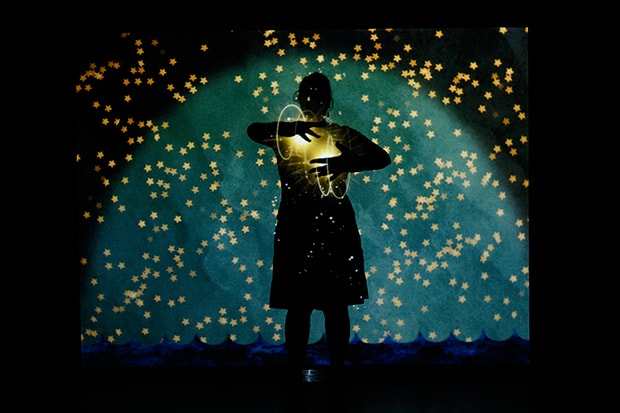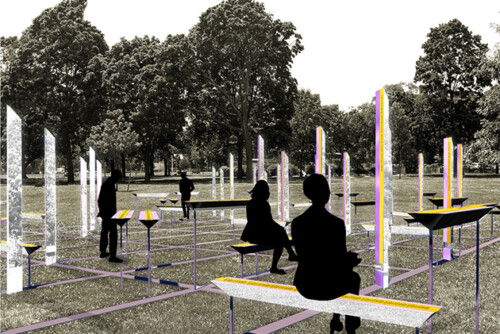Border-zoning
Based on Ugo Vlaisavljević’s insights in his text entitled, “From Berlin to Sarajevo,”1 I can claim that the proclamation of the fall of the Berlin Wall, and therefore of the border dividing the East and West being gone, which can be so cheerfully celebrated, has to do with the wrong conceptualization of the border itself. Maybe it is necessary to rethink the concept of the border and to ask: What does this present celebration of the fall of the Berlin Wall really mean? Ugo Vlaisavljević, referring to Étienne Balibar, points the finger to a process in Europe that states that the way we perceive borders changes, and with this change, we can conceptualize Europe differently as well.
Vlaisavljević states that the best way to understand the position within the European Union is to actually look toward the borders that are established by the European Union within those states that are not (yet?) integrated into it. Balibar envisioned that we have a process of simultaneous fragmentation of borders resulting in their multiplication on the one hand, and the disappearance of certain borders on the other. In 1997, he wrote—and I will paraphrase—that the borders are shivering, though he warned that this does not mean that they are disappearing. On the contrary, they are multiplied and diminished in their localization, in their function, stretched or doubled, becoming zones, regions, border-territories. Precisely what is at stake here is that the relation between “borders” and “territories” is reversed; that borders, after the fall of the Berlin Wall, started to be transformed into zones.2
The consequences of this are more than just a game of monopoly; this means that with this act of establishing zones or territories instead of fixed borders, the question of borders disappears so that the physiognomy of the border is able to change radically. We do not talk about Eastern and Western Europe anymore, but about the transformation of an entire territory into a zone which functions in such a way that it becomes a (new) border. Vlaisavljević clearly points out that this is the function of a new territory called the “Western Balkans,” which has the function of just such a border-zone.
If we take this point, which was almost prematurely developed in the 1990s, and is coming into its full power now (in global capitalism), then it is necessary to conceptualize the exhibition, Gender Check, as a border-zoning. It constitutes the former Eastern Europe as a border-zone, transforming it into a field for testing the level of genderization of the whole territory. We can especially state that this is what is at stake here, as we know that gender got its perverse condition of possibility over the last few years, when it was appropriated by Western, neoliberal, global capitalism in the form of gender mainstreaming, and was subsequently implemented throughout the “former Western Europe.” Therefore, the twentieth anniversary commemorating the fall of the Wall commemorates the fall of a wall of paper, as other walls are, in the meantime, still built of concrete and present the border as a zone. This border-zone is not at all at the border, but it is inside the very territory, or rather, it could be said that the whole territory itself is the border now.
When it was asked rhetorically, “Can Gender Speak East?”—the title of one of the panels of the Gender Check symposium (“Reading Gender: Art, Power and Politics of Representation in Eastern Europe”), those who responded affirmatively are those who do not understand the changes that affected former Eastern Europe or Europe as such. As the shifting of the border into a zone implies that the border is not a line, or not even a wall (and therefore the fall of the Berlin Wall can be cherished so enthusiastically), as the border presents a whole zone today, and gender is such a bordered zone! Gender Check therefore presents this new condition perfectly clearly. This is why the other panel at the same symposium, organized by the Western participants, used the title, “Fuck Your Gender,” because for radicalized (Western) queer positions, gender mainstreaming means the complicity of gender with neoliberal global capitalist governmentality. But for the former Eastern Europe, it seemed as though gender was still good enough, as queer was reserved for the West. The Western participants took queer and left gender for the East. Queer is to be seen in a certain dialectical genealogy that starts from feminism, passing through gender and that now presents a radicalization of feminism as a queer position. Gender, because of gender mainstreaming (malestreaming), presents its failed, negative side.
Biljana Kašić, in her text, “Where Is the Feminist Critical Subject?” states, translating from her own “political, transitional, post-Yugoslav, ‘European-promising,’ gender mainstreaming, vulgar capitalist-oriented” context, that it is necessary to emphasize “three ordering systems that are at play in visualizing (feminism and) Europe today: gender mainstreaming, the neoliberal global capitalist order and the market-consumer dictate that includes control over representation.”3 I showed that the Gender Check exhibition tries to blur them, making none of them possible to identify. I demonstrated that Gender Check is a gender mainstreaming, that the contemporary capitalist neoliberal order presents the shift from borders to zones under the shield of the co-propriety of capital/power (ERSTE/MUMOK/the institution of the curator). Moreover the control over representation is achieved through an enumerative logic, which is the new juncture between colonial epistemology and necropolitical governmentality.
Or to paraphrase Angela Mitropoulos in her text, “Legal, Tender,”4 what Gender Check does is to normativize an economy of gender and sexuality, blurring the line that binds the zone to the border, as well as connecting sex and desire to race and (re)production in a hegemonic way.
Therefore, precisely through this process of the reversal of borders into territories or zones, we can claim that the borders are disappearing for the need of the imperialism of circulation, and therefore, we can cheerfully greet the fall of the Berlin Wall, as it is a paper wall, transformed into a zone that will be repeated as a border elsewhere. Balibar stated that the Berlin Wall is gone—instead, we got a bureaucratic process of visa acquiring—and the border police are not at the borders anymore, but are in the hearts of the cities that are not yet part of the European Union, where within fortified embassy offices, as reported by Vlaisavljević, policemen, rather than what we knew in the past as embassy and consular bureaucrats, keep the walls firmly standing. Today, as noted by Vlaisavljević, the “former Western European” states’ embassy personnel are more and more professionalized bureaucratic police. Vlaisavljević stated that integration into the European Union starts before the future E.U. member state is integrated. In short, as lucidly pointed out by Vlaisavljević, Europe does not need the Berlin Wall anymore, as it has established invisible internal judicial police and managerial borders that function as outside walls.
Yes, as it was proclaimed by the slogan of the unified Germany in 2009: “Come, come to the country without borders.” The only problem is if you (we) happen to be, by “chance,” in any one of the many detention camps or prisons in Germany; or in similar facilities elsewhere in the European Union, the land without borders; or if you (we) are waiting in a line somewhere to get visa or asylum papers.
In short, for this first part of the text it is possible to say that gender binaries and the evacuation of the most important social contradictions from the space of former Eastern Europe, which were put forward in the entangled policy between the ERSTE bank and the curator, resulted in a symbolically dead space of the former Eastern Europe, incapable of thinking politically of hegemony, discrimination, racism, and exploitation.
In conclusion, it is important to state that this exhibition offers a substantial and fascinating illustration of colonial repetitions of processes of enfoldment within a “Western same” under conditions of tutelage.
PART TWO: Former Yugoslavia, Queer and Class
Now in this second part the question is posed of how to step out of the binary imposed on the former Eastern Europe space through processes of colonial repetition in which gender has a main role, as I have tried to show. A possible answer is given by implying the concept of queer onto the way of historically rereading the changes of the former Yugoslavia space. This concept of queer is elaborated with reference to philosopher and queer activist Beatriz Preciado’s text, “Gender and Performance Art. Three Episodes from a Feminist Queer Trans Cybermanga…,” published in 2004, in which she tries to develop an inventory that reflects on the history of performance art in the West in relation to the American history of feminism and postfeminist and queer practices and writings.5
I will attempt a similar genealogy for Eastern European space, more precisely for the former Yugoslav space. In the latter case, my task is to present through this new genealogy (which includes what is perceived as the Second World, i.e., the former Eastern European space) what I call the gesture of repoliticization of the space of performance art and its history, as well as the gesture of repoliticization of (post)feminism through queer optics.6
Before proceeding it is necessary to clarify this former Yugoslav space. The term “former Yugoslav space” is today discredited by the political elites of the former republics of Yugoslavia. In their nationalist madness, they dissociate themselves ferociously from such a reference in space and time. In radical contemporary art and leftist cultural readings, on the contrary, former Yugoslav space is not conceptualized as a geographical term, but as a political, economic, and conceptual paradigm of productive and contested historical influences between theory, contemporary art, and independent structures that are capable today of reconnecting themselves transversally in order to build works, structures of exchange, and forms of resistance. Feminism in the territory of the former Yugoslavia is an acknowledgment of the power of two centers—Zagreb and Belgrade in the 1970s, which had the capability of developing a powerful feminist movement. It is possible to see the importance of feminism—which was not brought to life until the 1980s in Ljubljana in connection with the underground movement—when we compare its theoretical analysis and activities with theoretical psychoanalysis in Slovenia in the 1980s. Both positions allowed for leftist radical rereadings of the socialist reality of the 1970s and 1980s—through feminism in Zagreb and Belgrade, and psychoanalysis in Ljubljana.
- Ugo Vlaisavljević, “From Berlin to Sarajevo,” Zarez 267 (2009): 23–25. [↩]
- Etienne Balibar, “La crainte des masses: politique et philosophie avant et après Marx,” Collection La Philosophie en effet (Paris: Galilée, 1997): 386–387. [↩]
- Biljana Kašić, “Where is the Feminist Critical Subject?,” New Feminism: Worlds of Feminism, Queer and Networking Conditions, eds. Marina Gržinić and Rosa Reitsamer (Vienna: Löcker Verlag, 2008) 457. [↩]
- Mitropoulos 2009. [↩]
- Beatriz Preciado, “Gender and Performance Art. Three Episodes from a Feminist Queer Trans Cybermanga…” Zehar 54 (2004). All references to Preciado’s arguments and thoughts are from this text. [↩]
- “Queer theory … attempts to map a more dynamic, less assured account of the body in motion within prevailing discourses of power. Moreover, it is precisely in seeking such destabilizing dis-identifications that the queer project should find points of intersection with feminist and post-colonial inquiry.” In Glenn Burger, “Queer Performativity and the Natural in Chaucer’s Physician’s and Pardoner’s Tales,” Conference on Cultural Frictions: Medieval Cultural Studies in Post-Modern Contexts, Georgetown University, Washington D.C., 27-28 October 1995. Available online. See also Marina Gržinić, “Performativity and Processuality,” Conference on Inventory in Dance and Performance, Tanzquartier, Vienna, 2005. Congress, selection and organization by Martina Hochmuth and Georg Schöllhammer. [↩]




